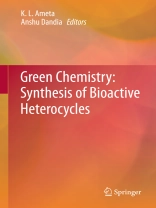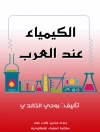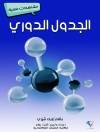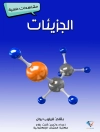The book presents a succinct summary of methods for the synthesis and biological activities of various different-sized bioactive heterocycles using different green chemistry synthetic methodologies, like microwave, ultrasonic, water mediated, ionic liquids, etc. The book also provides an insight of how green chemistry techniques are specific to the bioactive heterocyclic compounds.
Tabela de Conteúdo
Synthesis of Heterocycles through Multi-component Reactions in Water.- Sustainable Approaches towards the Synthesis of Quinoxalines.- Eco-friendly Synthesis of Bioactive Heterocycles.- Ammonium and Phosphonium Based Ionic Liquid: Green and Reusable Catalysts.- An Approach towards Green Switch through Nano catalysis for the Synthesis of Biodynamic Heterocycles.- Microwave Induced Synthesis of Various Quinoline Derivatives: Green Methodologies in Organic Synthesis.- Imidazolium Ionic Liquids: An Environment Friendly Medium for Various Applications.- Water: A Benign Solvent for the Synthesis of Various Organic Moieties.- Synthesis and synthetic applications of Biologically interesting Rhodanine and Rhodanine-based Scaffolds.- Molecular Iodine: Mild, Green and Nontoxic Lewis Acid Catalyst for the Synthesis of Heterocyclic Compounds.- Microwave Radiations: A Tool for the Synthesis of Heterocycles in an Eco-friendly Manner.- Green Chemistry Approach using Heterogeneous Catalysts in the Heterocyclic Synthesis.- Synthesis and Biological Evaluation of Some Quinazoline Heterocyclic Derivatives.
Sobre o autor
Dr. K. L. Ameta received his doctorate degree in Organic Chemistry from M. L. Sukhadia University, Udaipur, India in the year 2002. Presently, he is working as Assistant Professor of Chemistry, Faculty of Arts, Science and Commerce, Mody Institute of Technology and Science (Deemed University) Lakshmangarh, Rajasthan, India. He has vast experience of teaching both graduate and postgraduate level students. His research area involves synthesis, characterization and biological evaluation of different sized bioactive heterocyclic systems. In addition to this, he has keen interests in heterogeneous catalyzed organic synthesis and photocatalysis. He has published a number of research articles in various journals of national and international repute.
Dr. (Mrs.) Anshu Dandia is working as Professor at Department of Chemistry, University of Rajasthan, Jaipur. Also, she is Coordinator, UGC-SAP Programme and Director, P. G. School of Physical Sciences and Affairs, Vigyan Bhawan, University of Rajasthan, Jaipur. Prof. Dandia has published over 160 research papers in the field of synthetic organic chemistry in the journals of international repute. Her fields of research interest are green and nanotechnology in organic synthesis, heterocyclic and medicinal chemistry and organo-fluorine chemistry. Moreover, she is honored as “Fellow of Royal Society of Chemistry (FRSC)”, London in 2012; “Bronze medal” awarded by Chemical Research Society of India in 2012; “International Distinguished Women Scientist Award” in the international conference on “Chemistry for Mankind” organized by the joint venture of ACS, RSC and ISCB at Nagpur in 2011; “Top Researcher” award by the Vice Chancellor, University of Rajasthan based on highest H-index in the survey done by DST New Delhi in 2009. Apart from this, she is a dedicated teacher and strives to be abreast of new developments in teaching methodologies and she has received “Best Chemistry Teacher Award” in India by Tata Chemicals Ltd., Confederation of Indian Industries and the Association of Chemistry Teachers in Nov, 2012.












